Category Archive: Future
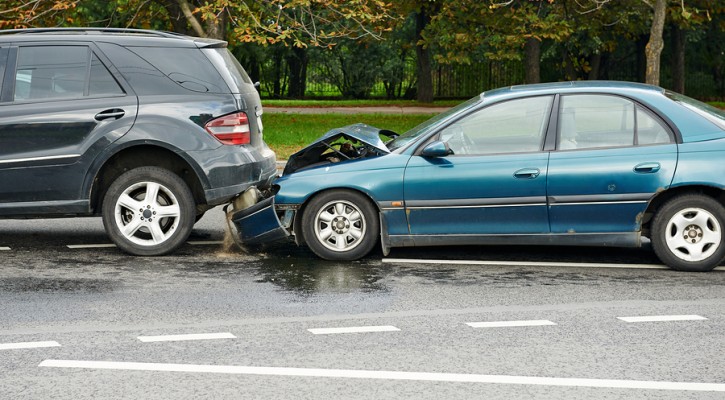
Front Crash Prevention Systems Reduce Car Crashes
February 4, 2016
Vehicles equipped with front crash prevention systems are less likely to rear end other vehicles according to the first study of its kind conducted by the Insurance Institute for Highway Safety (IIHS).
While front crash prevention systems, also known as automatic braking or collision avoidance systems have been around for a few years, they’ve primarily been available only as an option on higher end model cars. There hadn’t been enough of them in use to show any trends until recently when IIHS researchers used data from police reported front end crashes to compare the same model vehicles equipped with front crash prevention systems and those without.
According to the data, front crash prevention systems that included automatic braking reduced the number of rear end collisions by about 40 percent. Those vehicles with collision avoidance warning alone reduced the number of crashes by about 23 percent. The number of crashes resulting in injury to vehicle occupants was also greatly reduced.
The study’s authors said that if all vehicles were equipped with automatic braking systems, there would have been 700,000 fewer rear end crashes in the US in 2013. Overall, that number represents approximately 13 percent of all police reported crashes.
Those vehicles with automatic braking reduce the number and severity of crashes by:
- Automatically applying the brakes in time to avoid the crash completely, or
- Slowing the car enough to lessen the degree of damage or injuries.
A survey last year showed that American consumers would rather have collision avoidance systems than wireless technology in their new cars and the National Transportation Safety Board (NTSB) put out a transportation system wish list that included front crash prevention systems as standard rather than optional equipment in new vehicles.
This past October, ten vehicle manufacturers announced that they would soon start including front crash prevention and automatic braking systems as standard equipment on all new vehicles sold in the US. Once that starts to happen, we can expect to see a significant decline in motor vehicle crashes as the newly equipped vehicles hit the road. Until then, we’ll still have to depend on our incredibly slow brains to pay attention to the road ahead and avoid distractions.
Read more: Crashes avoided – Front crash prevention slashes police-reported rear-end crashes
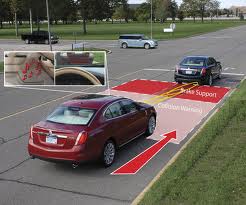
Automatic Emergency Braking To Become Standard On Most Vehicles
October 5, 2015
Ten automobile manufacturers have committed to making automatic emergency braking (AEB) standard equipment in all cars manufactured for the US and Canadian market according to a joint announcement by the National Highway Traffic Safety Administration (NHTSA), the US Department of Transportation (DOT), and the Insurance Institute for Highway Safety (IIHS).
Automatic emergency braking uses sensors such as lasers, cameras, radar, or sonar to detect an imminent crash. The system gives the driver a warning and, if the driver doesn’t take action in time, the system will automatically apply braking to avoid the crash. An IIHS study reported that the technology could reduce insurance injury claims by as much as 35 percent.
The system has been offered by several manufacturers over the past several years but only as an option on their high end models. The ten manufacturers who agreed to make the system standard equipment on all models are; Audi, BMW, Ford, General Motors, Mazda, Mercedes-Benz, Tesla, Toyota, Volkswagen and Volvo. Those manufacturers represent 57 percent of the light duty model vehicles produced in the US each year. The automakers have agreed to work with NHTSA and IIHS over the next few months to agree on the details and a start date for implementation of the program.
The act of voluntarily agreeing to make new safety technology standard equipment is unprecedented in the auto industry. Normally, NHTSA suggests standardization of a system and, with the automakers kicking and screaming the whole way, congress then has to pass a law making it required equipment. Two things are happening to change the way things are done between the federal government and the auto industry.
In 2013, IIHS added automatic braking systems to the requirements for a vehicle to earn the designation as a “Top Safety Pick +” in its annual list of safest cars. In January of this year, NHTSA announced that it was adding automatic emergency braking to its “wish list” of required safety equipment on new cars.
By voluntarily agreeing to add automatic emergency braking to their list of standard equipment, the automakers avoid the hassles of dealing with government regulators and remain in charge of the process. Also, as more and more buyers look at the IIHS safety ratings as part of the decision process when selecting a new car, adding automatic emergency braking will also help them get the highly coveted “Top Safety +” designation.
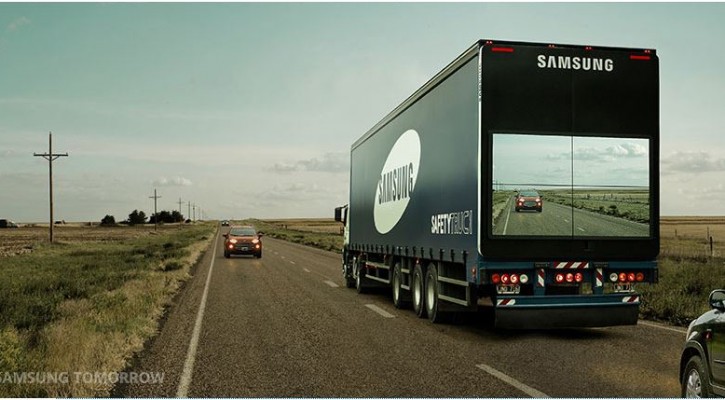
Samsung Tests Safety Technology To Improve the View Ahead
June 22, 2015
Samsung is testing a fairly simple product idea that could make driving safer and save a lot of lives.
If you’ve ever been stuck behind a large semi on a narrow road, you know the frustration that comes from not being able to see the road ahead in order to pass the truck safely. Even when the truck may be going relatively slowly, its size makes passing hazardous because of the extra time required to pass and the danger of unseen oncoming traffic. This frustration can lead drivers to make dangerous choices that can result in a crash.
By using a front mounted camera and four large display screens on the rear of the truck, Samsung is testing a video display that will show the road ahead to drivers behind the truck. The video display of the road ahead works even on the darkest roads. Hopefully, the video display will allow drivers to make more informed and safer choices when deciding whether or not it’s safe to pass.
Noting that it has one of the highest highway death rates in the world and that many of the roads there are two lane roads, Samsung started testing this new idea in the country of Argentina.
According to the Samsung blog, the results look promising but more testing needs to be done.
Part of the data that needs to be evaluated is whether or not drivers will adapt to using this technology for its intended purpose or will it become just another driver distraction that takes the driver’s attention away from the road as a whole. Before testing can be done in other countries, testing protocols have to be developed and government permission has to be obtained.
Unfortunately, while the technology could prove to be extremely helpful to drivers behind a truck, it won’t do anything to eliminate the large no-zones around a truck that prevent the truck driver from seeing vehicles behind and alongside. Drivers will still need to be aware of and respect the no-zones while attempting to pass.
Read more: The Safety Truck Could Revolutionize Road Safety
Photo: Courtesy of Samsung
NHTSA Introduces DADDS To Stop Drunk Drivers
June 4, 2015
A new system called DADDS (Driver Alcohol Detection System for Safety) was introduced to lawmakers, researchers, and safety advocates by the National Highway Traffic Safety Administration (NHTSA) today.
DADDS is designed to prevent a vehicle from starting if alcohol is detected in a driver. The system under development can do this in one of two ways, either through detection of alcohol in the driver’s breath or through touch on the vehicle’s starter button.
DADDS has been under development for several years through a joint effort by NHTSA and the Automotive Coalition for Traffic Safety (ACTS) a coalition of automotive industry groups. Together, they have worked with private sector researchers to develop this potentially life saving technology.
More than 10,000 deaths per year are caused by drunk drivers. That’s approximately one-third of all highway deaths in a year. It’s hoped that this system, once it’s fully developed, can prevent the majority of those deaths.
According to NHTSA, the research has been in progress since 2008 and is progressing in three stages:
- Phase I – Research and analysis of two different technological approaches to measuring driver alcohol levels – a touch-based approach allowing assessment of alcohol in human tissue and a breath-based approach allowing assessment of alcohol concentration in the driver’s exhaled breath focused on speed, accuracy and precision. Completed 2011.
- Phase II – Additional Research and testing of touch-based and breath-based sensors to improve accuracy and precision performance, and decrease measurement time to meet or exceed DADSS performance specifications. The prototypes will then be installed in a research vehicle. This phase is expected to be completed early 2016.
- Phase III – Phase III and subsequent phases of research will permit further refinement of the technology and test instruments as well as basic and applied research to understand human interaction with the sensors both physiologically and ergonomically – that is, how these technologies might operate in a vehicle environment. This phase began in late 2013 and is being conducted in parallel with the Phase II research.
Once the DADDS system is fully developed, NHTSA hopes that starting a vehicle will be seamless and practically unnoticeable to a sober driver but impossible for a drunk driver.
Read more: DADSS technology offers big leap forward in drunk driving prevention
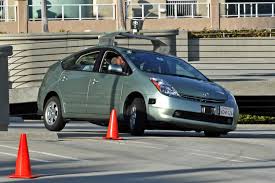
Self Driving Cars Weren’t At Fault In Small Number Of Crashes
May 13, 2015
Self driving cars have recorded very few crashes and, for the most part, weren’t at fault in those they did experience according to research done by the Associated Press.
While self driving cars, have been on the road for several years, the manufacturers weren’t required to publicly report crashes involving their cars until a new California law went into effect in September of 2014. That law made public reporting of crashes involving self driving cars a part of the licensing agreement to test the cars on state roads.
Google has been driving their self driving cars on California roads for six years. At all times, there are engineers behind the wheel ready to take over in case something goes wrong. According to Google, the cars have have driven more than 1.7 million miles with one million of those miles completely automatic.
According to Google, their 23 cars have been involved in eleven minor crashes with only minor damage and no injuries. Google claims that none of the cars on automatic mode were at fault in the crashes.
In April, in the first trip of its kind, Delphi Automotive sent a self driving car across the country from California to New York with 99 percent of the driving done by the car’s automatic controls. There were no reported incidents. Delphi did report one crash previous to the cross-country trip in which the driver of the other vehicle was at fault.
The promise of self driving cars is that they will make driving safer because, unlike human drivers, they follow traffic rules, obey the speed limit, and watch for hazards on the road. Even in an “unavoidable” crash, say with a red light runner, the self driving car can react quicker and apply the brakes or perform an evasive maneuver that will lessen the impact of the crash.
As of now, four states (California,Nevada, Michigan and Florida) plus the District of Columbia have passed laws authorizing testing of self driving cars on their roads. None of the other states outside of California have reported any crashes.
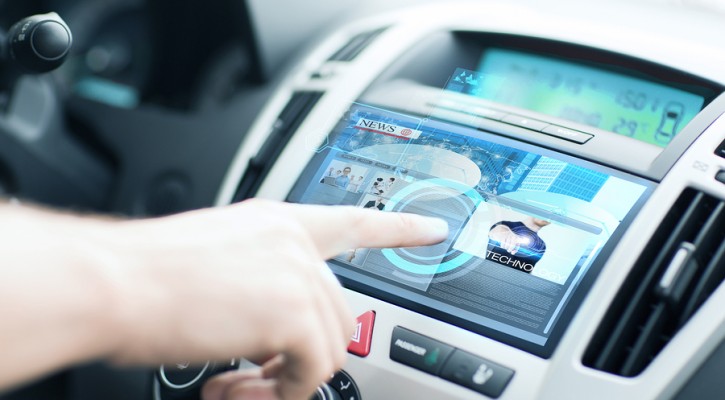
Drivers Prefer Collision Avoidance Over Wireless Technologies
April 29, 2015
A study published last week By J.D. Power shows that consumers prefer collision avoidance technology over wireless connectivity in their automobiles. At a time when auto manufacturers seem to be rushing to add more and more distracting wireless technologies to their new vehicles, this study comes as a welcome bit of news to driving safety advocates.
The J.D. Power 2015 U.S. Tech Choice Study showed that the top three out of five technologies consumers wanted in their next vehicle are collision avoidance technologies. The top three choices are:
- Blind spot detection and prevention systems,
- Night vision, and
- Enhanced collision mitigation systems.
According to J.D. Power, consumers are showing more acceptance of self-driving vehicles and the top three technologies that consumers prefer are the building blocks for eventual fully autonomous vehicles.
The study showed that the last two preferences on the top five are camera rearview mirrors, a driver assistance aid, and self-healing paint which falls into the “comfort and convenience category.”
Choices between operating systems and wireless carriers are one of the reasons consumers felt less inclined to prefer wireless technologies in new vehicles. Consumers are loyal to either Android or Apple operating systems and their wireless carrier. Consumers are wary about having the automaker choose an operating system for them and, until automakers solve the problem of a one size fits all system, wireless will remain a low priority.
Consumers also showed little enthusiasm for “advanced sensor technologies, such as hand gesture controlled seats, biometric driver sensors, or haptic touch screens.”
Read more: Consumer Preference for Collision Protection Technologies Paves the Way for Autonomous Driving

Could Self Driving Cars Lead To More Car Sickness?
April 20, 2015
Could self driving cars lead to more car sickness? Two researchers, Michael Sivak and Brandon Schoettle of the University of Michigan Transportation Research Institute are suggesting that self driving cars could lead to more car sickness among their riders.
Car sickness is a type of motion sickness caused by a conflict between what the eyes see and what the inner ear is experiencing. When a person is involved in an activity, say reading a book, while the car is in motion, the person’s eyes are telling the brain that he or she isn’t moving; however the signals received from the inner ear’s balance system are telling the brain something quite different. The conflict between these two signals can lead to sickness; most often nausea and vomiting.
That’s why car sickness is most often seen among young children sitting in the back seat of the vehicle. They’re often too small to see out the window and they’re normally involved in other activities such as coloring or reading a book. Their eyes aren’t receiving those signals telling them that they’re in motion but their inner ears are. Many a parent has experienced the frustration of a child, suddenly and with little warning, vomiting all over the back seat. It doesn’t make for a pleasant family trip.
The U-M researchers surveyed 3,200 adults in the U.S. and five other countries and asked what kind of activities they would engage in if they were freed of the responsibility of driving in a self driving vehicle. More than a third said they would engage in activities such as reading, playing a game, or watching a video. Those are just the types of activities that could potentially lead to car sickness.
Without looking at the road and matching the eye’s signals to the signals coming from the inner ear, the researchers predict that anywhere from six to twelve percent of adults could be expected to suffer the effects of car sickness.
Health experts advise that, to prevent car sickness, riders should look out the window and gaze toward the horizon in the direction of travel; doing that will stop that sensory conflict that causes car sickness. For children, along with the obvious safety benefits, another benefit of booster seats is that they help raise the child up to a height where they can more easily look out the window and, hopefully, limit the effects of car sickness.
Read more: Motion sickness in autonomous cars: Don’t read and ride
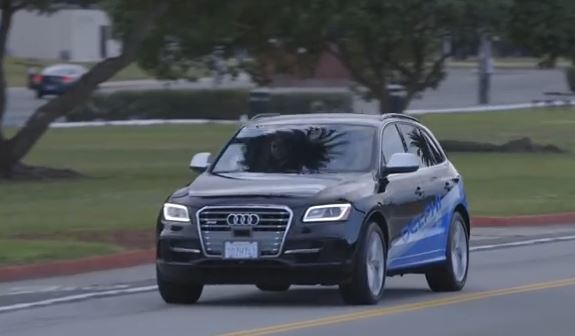
Autonomous Car Travels Across US
April 7, 2015
In the first trip of its kind, an autonomous car recently completed a cross country trip from California to New York. The Audi SQ5, modified by Delphi, an automotive supplier, set the record for autonomous vehicles by traveling 3.400 miles in nine days.
While Google and others have been openly developing autonomous vehicles, for several years, Delphi had been developing theirs under the radar. Unlike Google, who has plans to build their own autonomous car, Delphi, who manufactures parts for cars, is hoping to develop a system that can fit into any production model.
The trip was designed more for gathering data on the capabilities of their autonomous system and the engineers said they gathered nearly three terabytes of data on the trip. However, the journey also served as a marketing tool because the destination was the New York International Auto Show where they hoped to showcase the vehicle.
Delphi’s autonomous car differed from the Google vehicle in that it doesn’t have a spinning radar mounted on top of the vehicle. Instead, it used Lidar (laser radar) along with long range and short range radar and cameras embedded throughout the vehicle to watch for hazards and maintain a safe distance from other vehicles. The system was designed to fit seamlessly into a vehicle without any of the obvious features of an autonomous car.
The trip was limited to daytime driving and engineers were on board to take over driving if necessary. The engineers did, in fact, take over driving duties in heavy rush hour traffic for the sake of safety. In spite of the engineers taking control at times, Delphi says that the vehicle completed 99 percent of the trip on its own.
The autonomous system is designed, in the words of the engineers, to be boring. The system doesn’t allow the vehicle to speed, it always maintains a safe distance from other vehicles, and merges smoothly from freeway on-ramps into traffic. Although the system doesn’t currently allow right turns on red, that can be changed in the future. A few bugs still have to be worked out. The engineers say that the system has a hard time recognizing something as low and subtle as a speed bump.
Delphi’s system could lead to the introduction of autonomous car systems even earlier than predicted. Unlike the Google car, which has never ventured outside of California, the Delphi system doesn’t rely on Google maps for directions; instead it depends on the cameras and Lidar to allow it to travel on any road under almost any condition.
Read more: We’ve reached our destination!
Image: Courtesy of Delphi Automotive
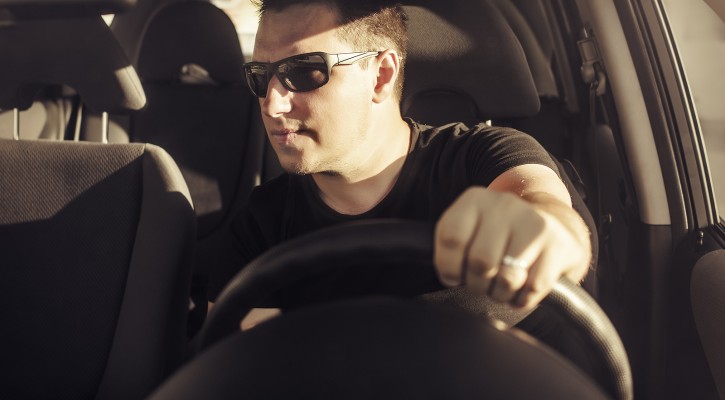
Eye Tracking Device Checks For Driver Attention And Fatigue
February 5, 2015
An eye tracking device that follows a driver’s eye movements could be in your driving future. The device, designed to monitor a driver’s eye movements and warn of inattention or driver fatigue can monitor a driver’s eyes, even through sunglasses.
Similar eye tracking devices have been talked about for quite a few years now but this one seems to have a track record. Developed by a company called Seeing Machines in Australia, their equipment has been used for some time and is currently installed in up to 4,000 delivery vehicles and heavy mining machines. Their use in mining equipment, it is claimed, has led to a 70 percent decrease in driver fatigue and distraction.
For cars, the company has developed a small eye tracking detector designed to fit easily into a car’s dashboard. It’s designed to work in conjunction with advanced driver assistance systems such as automatic braking and lane departure systems. If the system detects that a driver isn’t paying attention to the road or is fatigued, it can give an audible warning or vibrate the seat to bring the driver’s attention back to the road.
The company also sees the systems being used in aircraft cockpits and simulators, and working environments where strict attention to computer and machinery consoles is necessary.
They list Ford, General Motors, and Toyota as partners so it looks as if the auto industry is actively pursuing this technology for future applications in automobiles.
Read more: Eye-Tracking Car Tech Will Help Drivers Remain Focused
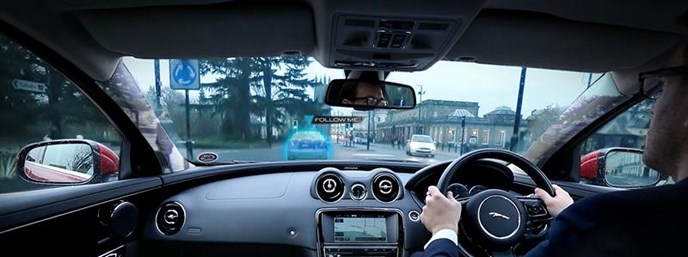
Jaguar Land Rover Proposes Invisible Pillars and Ghost Cars
December 18, 2014
Invisible pillars and ghost cars are a couple of new technologies to make driving safer that are being proposed by Jaguar Land Rover researchers.
Invisible Pillars
To make cars safer and strengthen the roof, pillars between the car’s body and roof had to be widened in order to make them stronger. The problem with that is that, when making turns or checking blind spots, the pillars block the driver’s view of the area around the car. Continue Reading
